If you’re considering the tiny house lifestyle in Florida, you’ll find that the regulations can be quite specific and will vary by county.
Placing a tiny house on your property in Florida is generally possible, but there are several rules and regulations you’ll need to navigate.
The zoning laws are the starting point, and your ability to live in a tiny house depends significantly on where your land is located and how it’s zoned.
Whether you’re aiming for a tiny house on a permanent foundation or a tiny house on wheels, different standards apply.
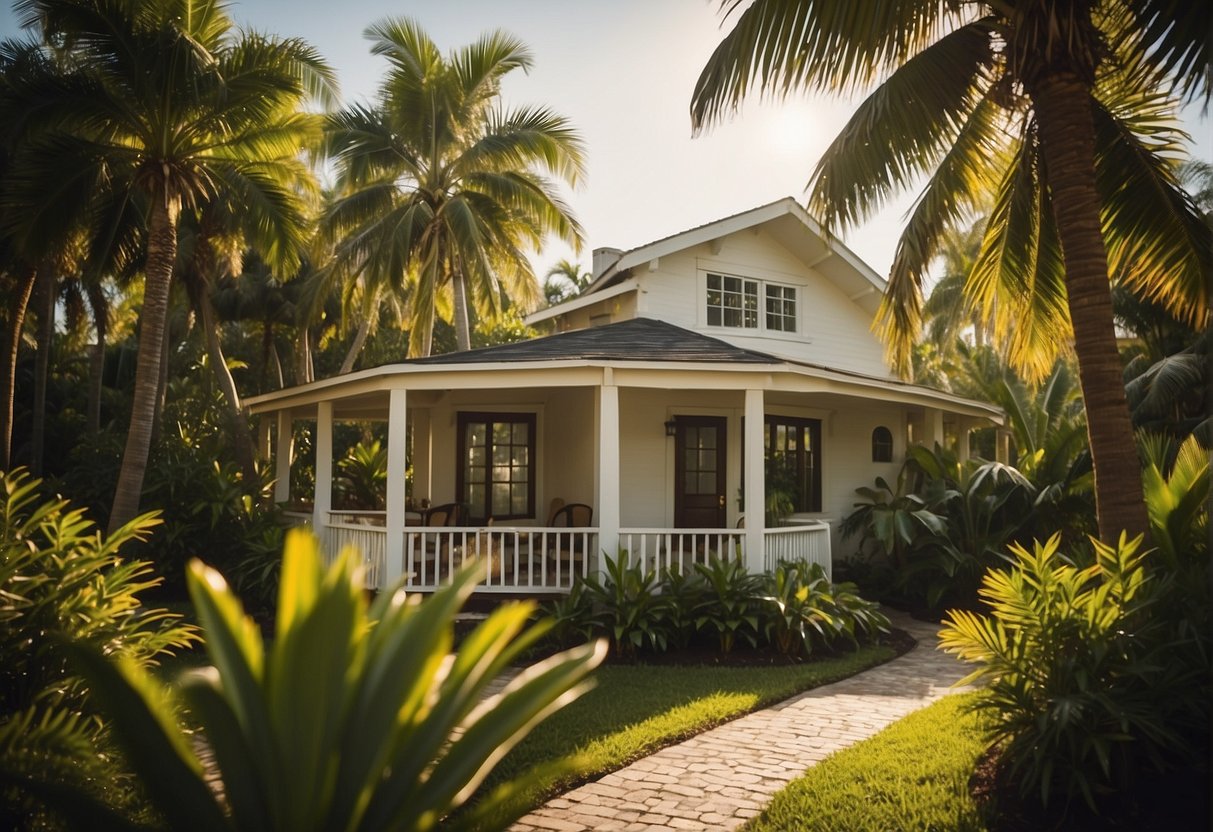
Building and safety standards are next in line for consideration.
A tiny house built on a permanent foundation is subject to Florida’s building code, while one on wheels often comes under the rules governing RVs, which include specific safety standards.
Size and space regulations must also be adhered to, as local housing authorities may have set minimum square footage requirements.
Living in a tiny house community could present an alternative, with some counties having specific regulations that facilitate tiny house living.
Key Takeaways
- Zoning laws and land use vary by county, affecting where you can place a tiny house.
- Building codes for foundation-based homes and safety standards for tiny houses on wheels must be followed.
- Each local housing authority may have minimum size requirements for tiny homes.
Understanding Tiny House Regulations in Florida
If you’re thinking about setting up a tiny house in Florida, zoning and land use regulations will be your compass.
Florida’s regulations vary by county, so your tiny home adventure starts with some homework on local jurisdiction rules.
Building codes often come to mind first, and rightly so. They’re a collection of rules that must be followed for the legal construction and occupancy of buildings.
They ensure that structures are safe and healthy for residents.
Florida has specific size requirements; for example, a tiny home might need to be at least 1,500 square feet in some areas, although this size can significantly vary depending on your location.
- Zoning regulations, which differ county by county, dictate how land can be used. They typically cover:
- Minimum and maximum size of dwellings
- Setback requirements from property lines
- Maximum height of the structure
- Whether tiny houses can be primary residences or must be accessory dwelling units (ADUs)
Here’s a quick glance at what you may find:
| County | Tiny House Acceptance | Notes |
|---|---|---|
| Miami-Dade | Yes | Has tiny house-friendly regulation |
| Pinellas | Yes | Supports tiny house living |
| Sarasota | Yes | Tiny house regulations in place |
| Dixie | Allowed as ADUs | Max size 400 sq ft for tiny houses |
| Orange | Allowed as ADUs | Updated zoning regulations in 2018 |
Checking with the county regulations where your land is located is essential.
Remember, it’s not just about what’s legal; it’s also about finding the right fit for your tiny home dreams within Florida’s diverse tapestry of rules and regulations.
Zoning Laws and Land Use
When you’re setting up a tiny house in Florida, it’s key to wrap your head around the zoning laws and land use regulations.
These can be vastly different from one municipality to another, so you’ll want to check out the local zoning ordinance before making any big moves.
Here’s the gist:
- Zoning: Essentially, zoning is about where things can go. Your plot of land is likely zoned for a particular use—residential, commercial, etc.—and that determines if a tiny house can be legally placed there. In some areas, tiny houses are a-okay, while others might not be on board with your diminutive dwelling dreams.
- Land Use: This refers to how land is utilized within those zones. For a tiny house, you’re looking at residential use, but whether your tiny abode needs to be on a foundation or can go the wheel route (like an RV) depends on the specific local regulations.
Consulting Professionals:
If zoning ordinances sound like Greek to you, a Florida land use attorney could be a lifesaver.
They can help you navigate these bureaucratic waters, ensuring you’re not unknowingly planning a tiny house rebellion against local laws.
- Land use attorney: They’ll have the lowdown on the legal lingo and what’s up with land use in your neck of the woods.
- Zoning officials: Local zoning officials are also valuable resources. They’ll let you know what’s up to code and what will get you fined.
Building and Safety Standards
Before you start your tiny house project in Florida, know that there’s a process to ensure your safety and compliance with local laws.
You’ll need to navigate the building permit process, adhere strictly to construction requirements, and sort out utilities and plumbing to meet state specifications.
Building Permit Process
In Florida, you need a building permit to construct any dwelling, including a tiny house. Here’s what you typically need to do:
- Check with your local building department: Understand the specific requirements as they can vary by county.
- Submit detailed plans: These include site plans and construction drawings that comply with local zoning and building codes.
Construction Requirements
Florida’s building codes dictate the specifications for your tiny home’s construction. Keep these in mind:
- Size matters: There’s often a minimum square footage for tiny homes.
- Quality is key: Use materials and practices that meet safety standards.
- Emergency exits: Your design must include properly sized and accessible emergency exits.
Utilities and Plumbing
Your tiny house will need essential services such as water, electricity, and sewage. You’ve got to ensure:
- Plumbing: It must be up to code for safe water supply and waste disposal.
- Utilities: Installation of electrical wiring and fixtures should be done by a certified professional to prevent hazards.
Placement and Location Criteria

When you’re ready to plant your tiny house in Florida, it’s crucial to know where you can and cannot park your diminutive abode.
Each area has its own set of regulations, and there are a few key land-related restrictions to keep in mind.
Suitable Locations for Tiny Houses
You’ve got several options for placing your tiny house in Florida, but make sure to check local zoning laws first:
- Own Land: If you own land, ensure it’s zoned for tiny houses, which can sometimes be classified as accessory dwelling units (ADUs).
- Tiny House Communities: These are areas designed specifically for tiny homes, providing a sense of community and infrastructure.
- RV Parks: Some RV parks welcome tiny houses as they’re considered movable dwellings; remember, Florida’s weather can be a major factor, so pick a spot that can withstand seasonal storms.
Setbacks and Land Restrictions
Before setting up your tiny house, be aware of the following:
- Setbacks: These are the required distances your tiny house must be from property lines, streets, and other structures. Setbacks maintain privacy and safety.
- Land Restrictions: Look into any land use restrictions that could limit your ability to place a tiny house on your property, such as environmental protections or historical preservation areas.
Foundation and Mobility Options
If you decide to build a tiny house on your property in Florida, you’ll have two primary options: laying down a permanent foundation or keeping your little abode on wheels for mobility.
Permanent Vs. Movable Tiny Houses
Permanent Foundation:
- If you’re looking at a permanent foundation, you’re dealing with something similar to traditional home construction.
- A permanent tiny house typically involves a concrete slab or pier foundation, which can legally tie your structure to the land.
- An upside of this is bolstered property rights; you can sell it, bequeath it, or enjoy the stability like any regular home.
Movable:
- On the flip side, keeping your tiny house on wheels means maintaining the flexibility to relocate as you please.
- These are often constructed on top of a trailer base, making them easier to move but sometimes complicating matters with local zoning rules.
- When on wheels, your tiny house is considered personal property rather than real estate, leading to different treatment under the law.
Size and Space Regulations
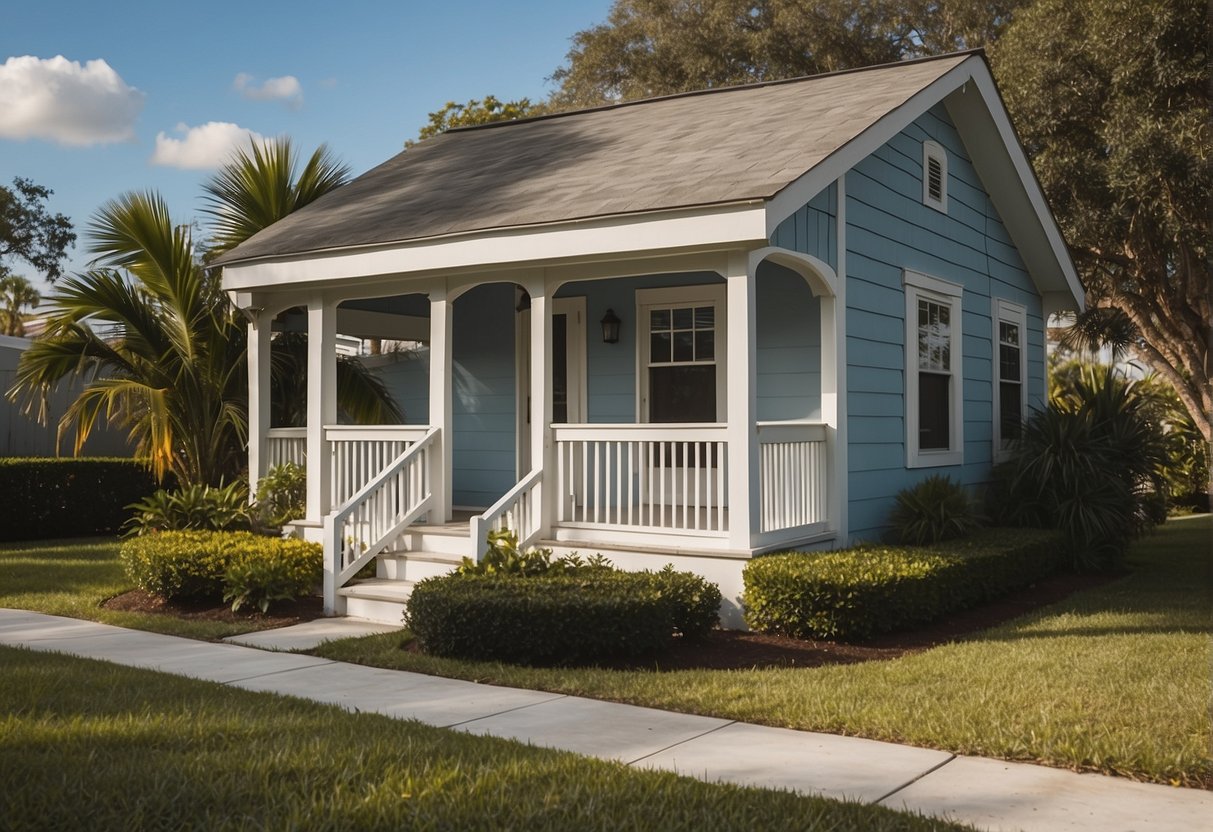
In Florida, it’s crucial to stay aware of specific size and space regulations. Each county may have unique requirements that dictate how small your tiny home can be.
- Minimum Square Footage: You might find that in some areas, the smallest size for a permanent tiny house is typically around 375 square feet. However, this can go up in certain housing areas, where the minimum might be as much as 1,500 square feet.
- This means that you should always double-check the local zoning laws to ensure compliance.
- Square Footage Requirements: The square footage of your tiny home must not only meet minimum size requirements but also align with the zoning regulations of the county where your property is located.
Here’s a snapshot of what you might encounter:
| County | Minimum Size Requirement |
|---|---|
| General | ~375 to 1500 sq ft |
| Specific Area | Up to 1500 sq ft |
The restrictions often serve various purposes, from preserving the character of neighborhoods to ensuring the safety and comfort of residents.
It’s not just about the size of your tiny home, but also about making sure it’s sited and built according to local requirements. These might include setbacks from property lines, maximum height, and whether your home is on a permanent foundation or wheels.
So before you get too invested in dreaming up your cozy nook, make sure to do your homework on the size requirements specific to your locale in Florida.
Living in a Tiny House Community
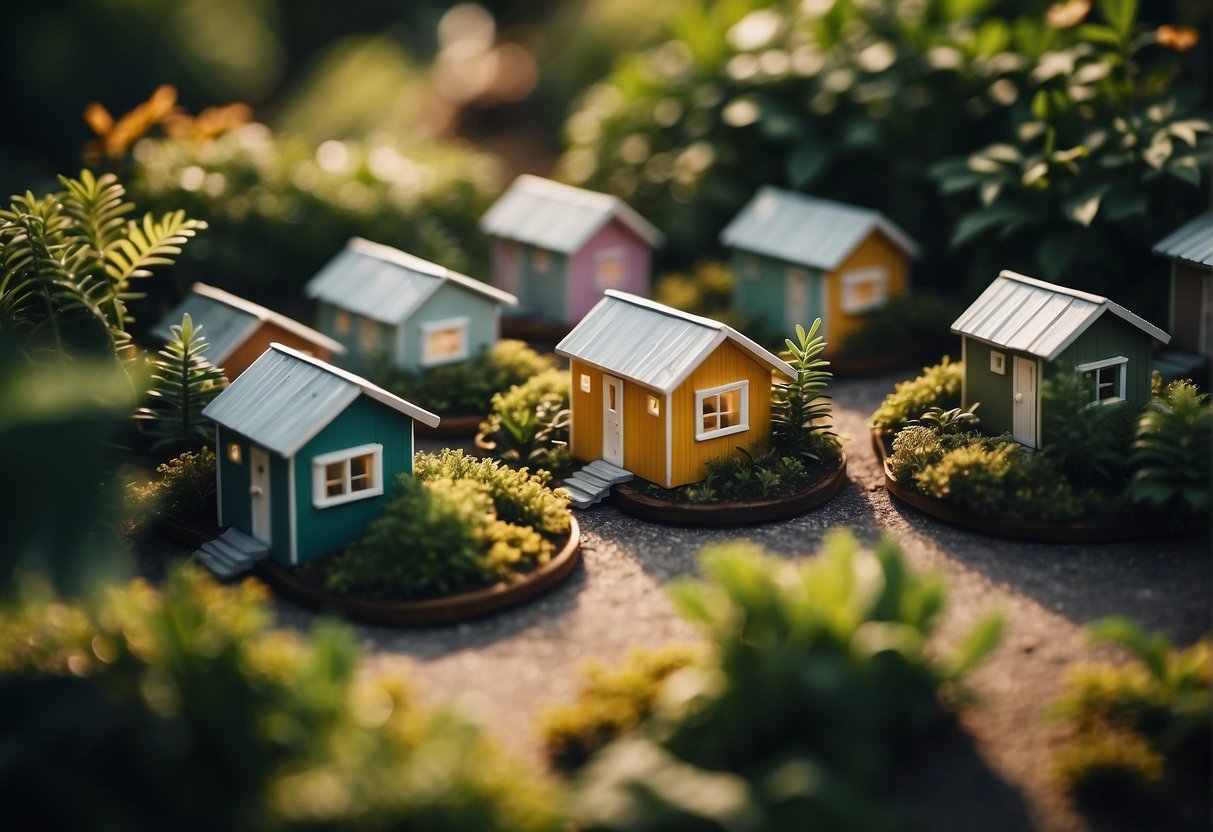
If you’re considering joining a tiny house community in Florida, you’re looking at embracing more than just a place to live. These communities are about connection and shared values.
You’ll find yourself part of a group of people who prioritize social living and eco-friendly practices.
Tiny house communities often emphasize simple living. You’ll get to downsize not just your space, but also the clutter of possessions that often overwhelm traditional homes.
This minimalistic approach is about saving space and focusing on what truly matters to you.
Here’s what to expect with the tiny house community lifestyle:
- Affordability: Your cost of living may decrease, as tiny homes can be more budget-friendly.
- Eco-Friendly: Many communities are designed with sustainability in mind, from renewable energy sources to shared gardens.
- Downsizing: Embrace the reduced space as an opportunity to live with less and simplify your life.
- Social Living: Tiny house communities often have communal areas where residents can gather and socialize.
Let’s break down some of the perks in bullet points:
- Less time spent on cleaning and maintenance.
- Opportunities for shared activities with neighbors.
- Lower utility bills due to smaller living spaces.
- Sense of belonging and support among community members.
While the idea of living in a tiny house community has many potential perks, make sure to check local zoning laws and regulations to ensure that your tiny house dream is a feasible reality in Florida.
Counties with Specific Tiny House Rules
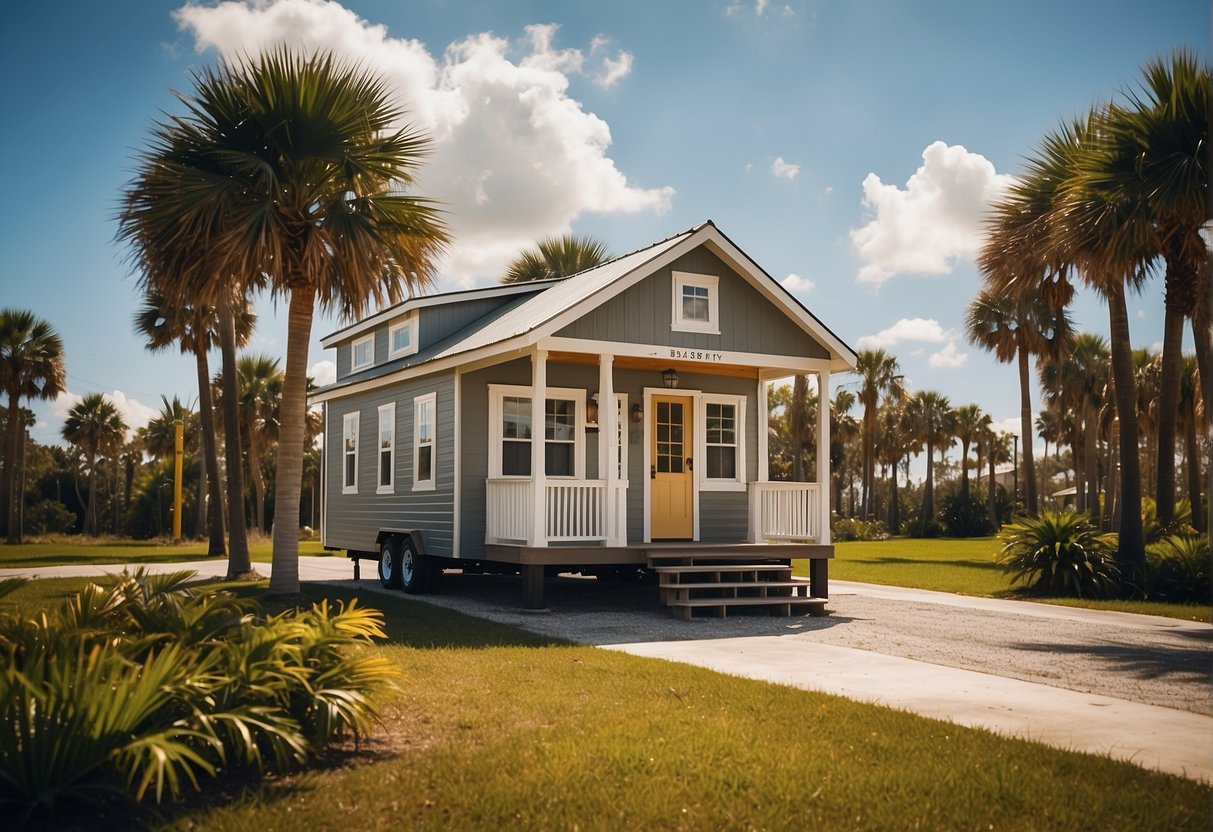
In Florida, counties have specific regulations for tiny houses. Here are the guidelines and policies of some counties that have created particular rules for tiny home enthusiasts.
Sarasota County Regulations
In Sarasota County, your tiny house must comply with the local zoning requirements. They recognize tiny houses and have provisions for them, but exact regulations can vary within county limits, so it’s important to check the details for your desired location.
Orange County Guidelines
Orange County approved zoning regulations in 2018 that allow tiny houses on wheels to be used as accessory dwelling units (ADUs). In this area, a tiny house can be a maximum of 400 square feet.
Osceola County Codes
If you move to Osceola County, you’ll need to navigate their guidelines carefully. Specific building codes dictate the minimum size and construction standards for tiny houses.
Pinellas County Policies
In Pinellas County, the rules allow for tiny houses but come with their own set of stringent requirements regarding the placement and legal definition of your tiny home. Ensure you’re familiar with both zoning and building codes.
Additional County Variations
Different counties in Florida have a variety of regulations that can affect where and how you can build a tiny house:
- Suwannee County sets out specific zoning laws, including the minimum size of dwellings.
- Dixie County has been tiny house friendly since 2018, particularly for tiny houses on wheels as ADUs.
Other counties, such as Miami-Dade, Levy, and Wakulla, also have regulations in place. If you’re eyeing these locations, double-check their local government websites or contact the relevant planning department for the most precise information.
Alternative Housing Options in Florida
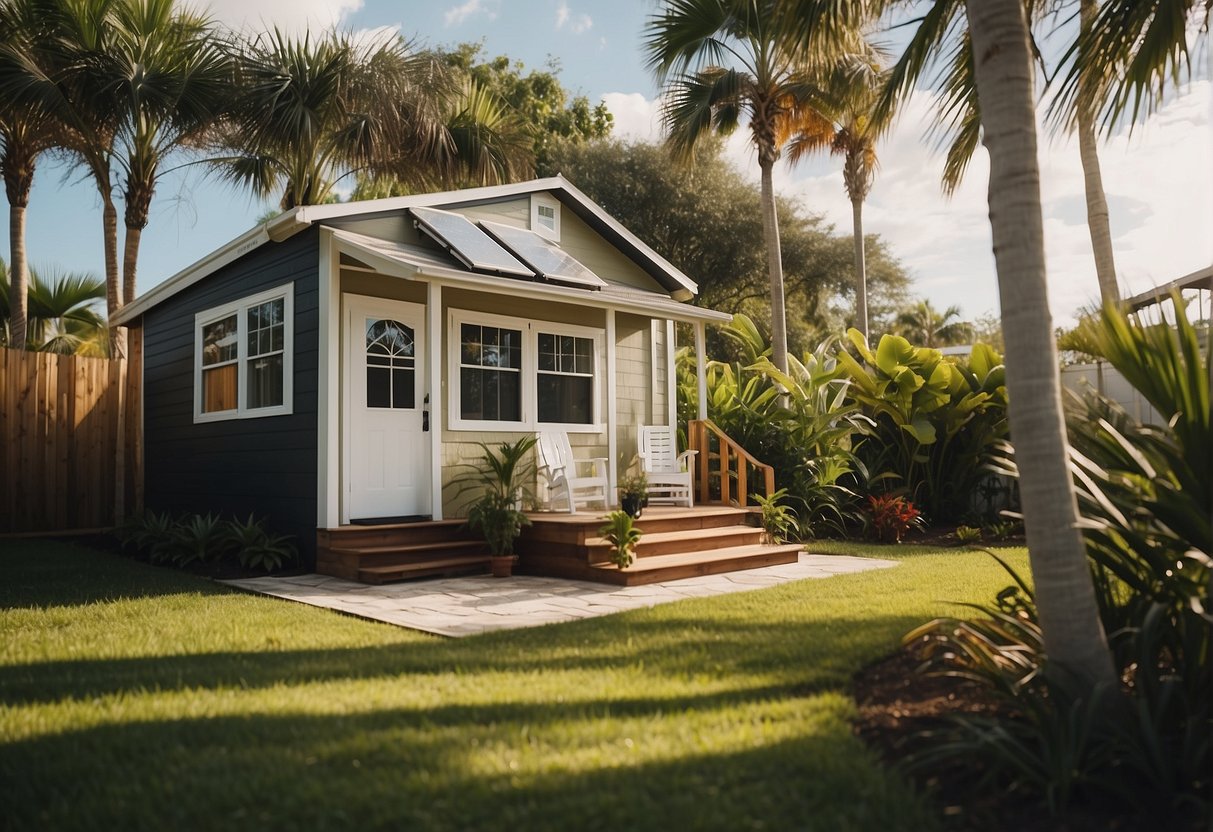
In Florida, you have a diverse mix of alternative housing options that balance lifestyle preferences with local regulations. Whether you’re into mobile living or just need an extra space for family, you’ll find options ranging from RV parks to tiny backhouse units.
RV Parks and Mobile Homes
Florida’s pleasant climate makes it a hotspot for RV parks and mobile homes. These parks offer amenities like hookups for water, sewer, and electricity, plus they’re often located in scenic areas near beaches or natural preserves.
If you own an RV, staying in a designated RV park gives you a sense of community and the freedom to hit the road whenever you wish.
For more permanent setups, mobile home parks provide a stable location without the commitment of traditional homeownership.
Accessory Dwelling Units (ADUs)
Accessory Dwelling Units (ADUs) are a great choice if you’re looking for extra space on your existing property. They can serve as a guest house, a rental, or a workspace.
ADUs must comply with local zoning regulations, but they offer a flexible solution to expand your living area. Think of them as a mini version of your main house, but with the independence of a separate unit.
Pros and Cons of Tiny Living
The appeal of tiny houses is on the rise, and Florida’s laid-back lifestyle complements this trend well. Here’s a quick rundown:
Pros of Tiny Living:
- Reduced costs: Tiny homes can be less expensive than traditional houses.
- Sustainability: Their small size means a lower carbon footprint.
- Community: Some areas have tiny home communities with shared amenities.
Cons of Tiny Living:
- Space constraints: Less room means downsizing possession and a tighter living space.
- Zoning challenges: Finding the right spot can be tricky as regulations vary by county.
